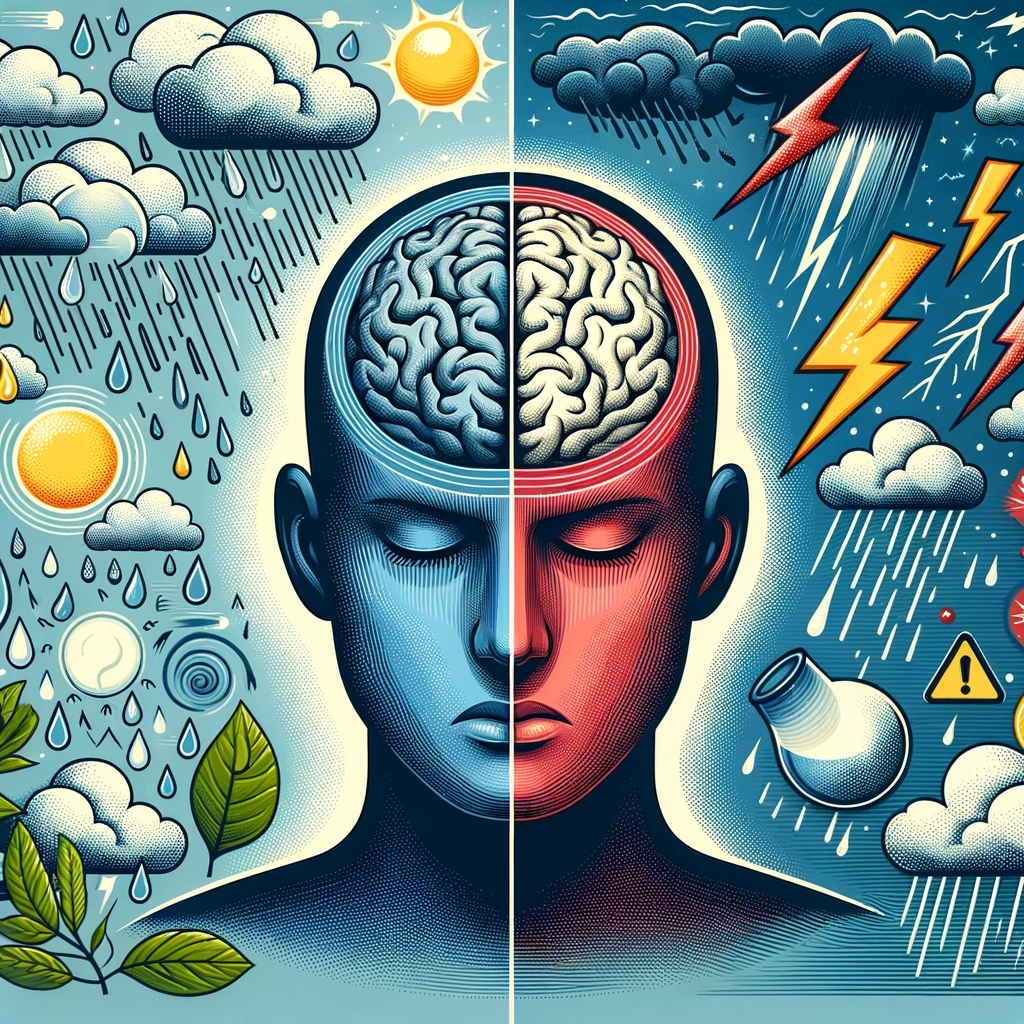- The Health League
- 0 Comments
For many migraine sufferers, it seems like the weather can be a relentless trigger, turning what could have been a good day into a challenging ordeal of managing pain and discomfort. But is there a link between weather changes and migraines? Let’s dive into what science says about this connection and explore how understanding it might help you manage your migraines more effectively.
Understanding the Connection
Migraine is a complex neurological condition, and those who experience it know that it can be triggered by various factors, including stress, certain foods, hormonal changes, and, yes, even the weather. Research suggests that certain weather patterns can influence the onset of migraines in some people, although the reasons why can vary from person to person.
Common Weather Triggers
Barometric Pressure Changes: A significant drop in barometric pressure, which often occurs before a storm, is one of the most commonly reported weather-related migraine triggers. These pressure changes might affect the pressure in the brain or cause imbalances in brain chemicals, leading to a migraine.
Temperature Fluctuations: Both heatwaves and cold snaps can trigger migraines. Extreme temperatures may influence serotonin levels in the brain, affecting blood vessels and leading to a migraine.
High Humidity: High humidity levels can also be problematic, possibly because they can affect hydration levels or cause changes in the pressure within the sinuses, which in turn might trigger migraine pain.
Bright Lights and Sun Glare: Bright sunlight and the glare from the sun can provoke migraines. This is not only a matter of temperature but also light sensitivity, which is a common symptom among migraine sufferers.
Managing Weather-Related Migraines
While we can’t control the weather, understanding its impact on migraines can help us prepare and potentially lessen the severity or frequency of weather-induced attacks. Here are a few tips:
Monitor the Forecast: Pay attention to the weather forecast and note any changes in your migraine patterns in relation to weather changes. This can help you identify specific triggers.
Stay Hydrated: Dehydration can worsen migraine symptoms, so it’s crucial to stay well-hydrated, especially during hot, humid days or when a change in barometric pressure is expected.
Maintain a Consistent Environment: Try to keep your indoor environment as consistent as possible in terms of temperature and humidity. Air conditioning in the summer and a humidifier in the winter can help.
Plan Ahead: If you know a potential trigger is coming, such as a drop in barometric pressure or a heatwave, taking preventive measures such as medication or relaxation techniques can be beneficial.
Seek Professional Guidance: A healthcare provider can offer personalized advice and treatment options to help manage migraines effectively.
While the link between weather changes and migraines is clear for many people, it’s also a reminder of the complex nature of migraines. By becoming more aware of how weather affects your migraines and taking proactive steps to manage these triggers, you can maintain better control over your condition. At The Health League, we understand the challenges that come with managing migraines and are dedicated to providing support and personalized care plans to help you navigate through your migraine journey. If weather-related migraines are affecting your quality of life, reach out to us for guidance and treatment options tailored to your needs.
